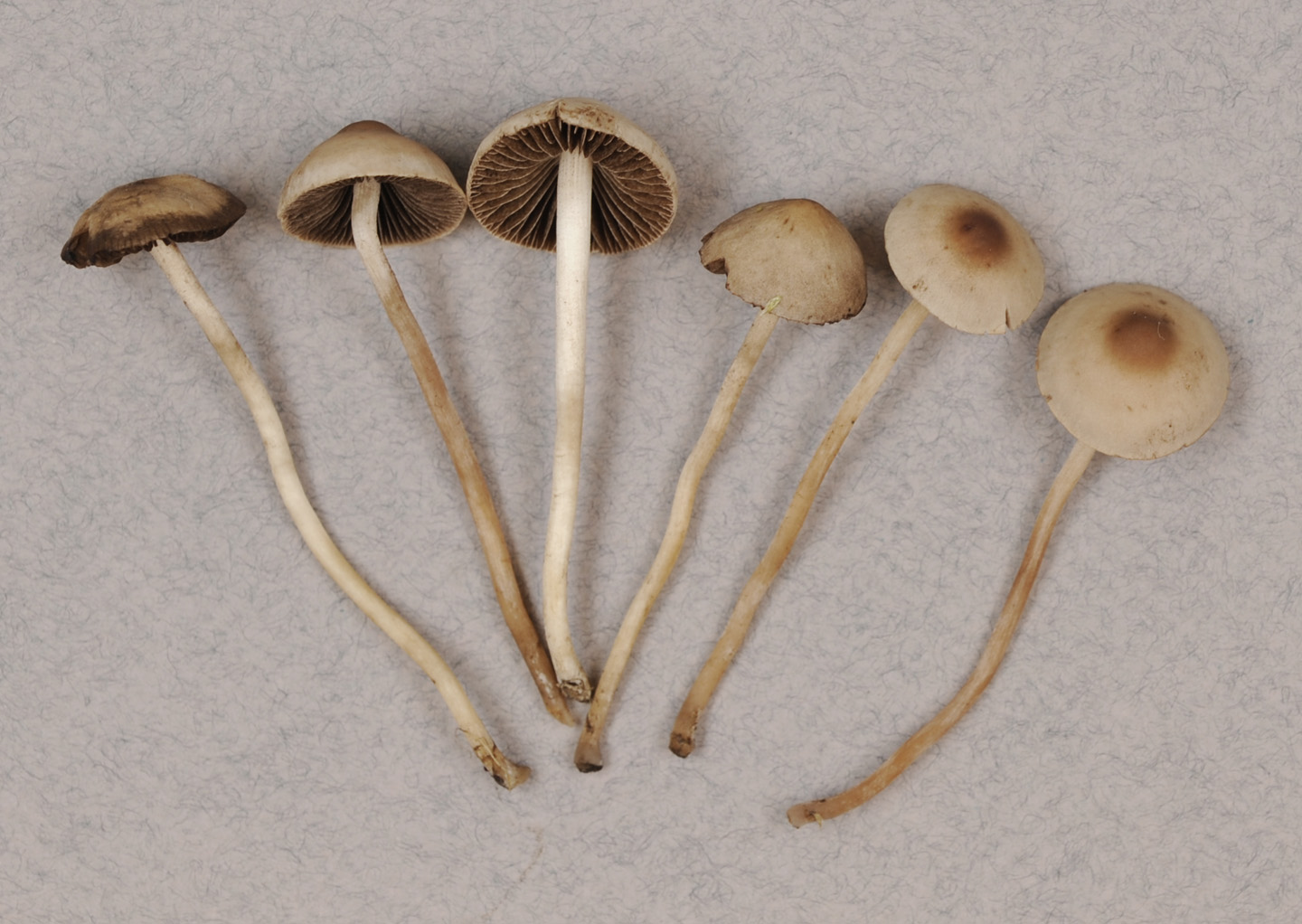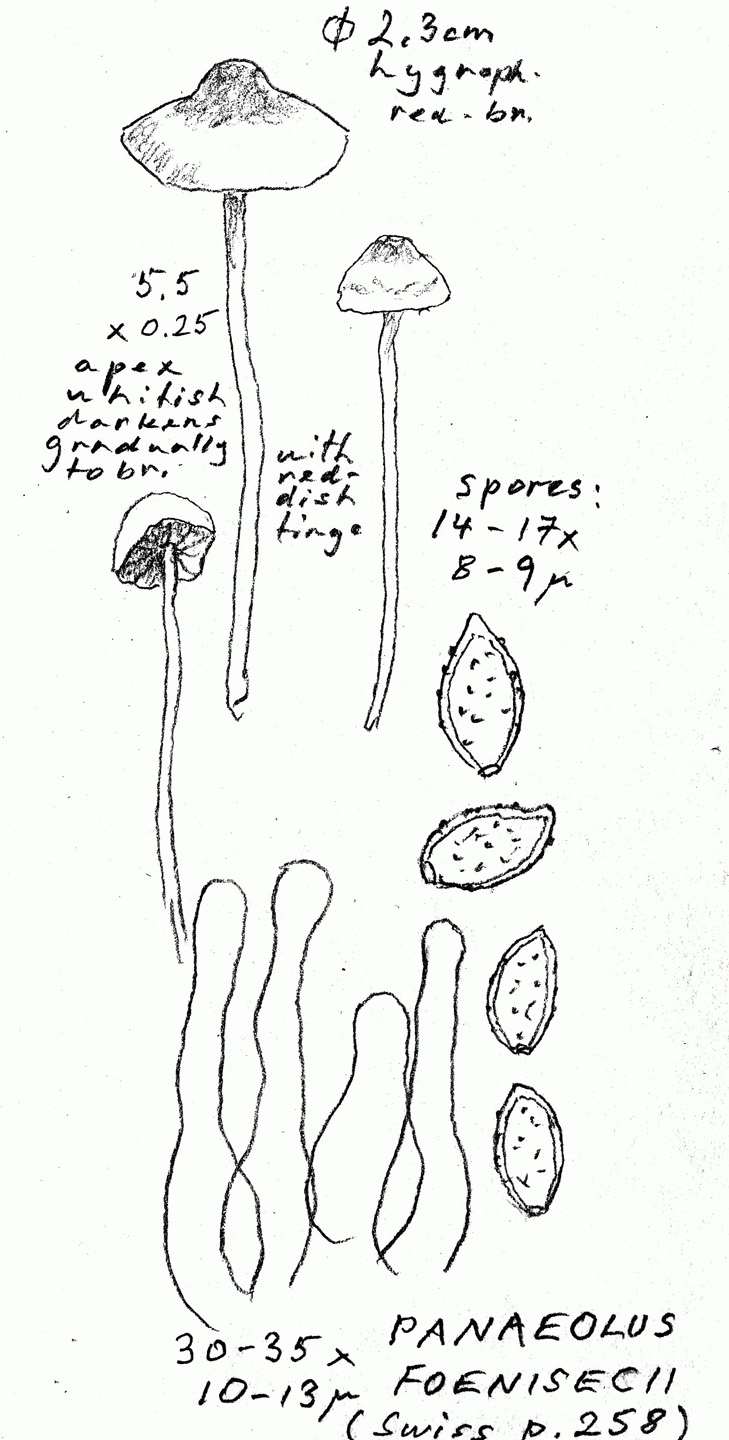Panaeolina foenisecii — Lawnmower's mushroom, haymaker's mushroom
Odour: Indistinct.
Cap: 1–3 cm in diameter, hemispherical to conical when young, later more flattened, but often with a low central bump. The colour changes as the cap dries. When wet, the surface is completely brown or orange brown. As they dry, caps often develop a dark brown band around the margin, then a light band, then an orangish-brown central disc. After losing more water, caps become light beige, orangish in the centre. The cap surface is matte, not shiny.
Gills: Broadly to narrowly attached, moderately close. The colour is initially light brown, then mottled brown (see Additional Images), then brown. The spores ripen in patches and the dark brown colour of the ripest ones causes the mottling. Gill edges remain lighter than sides of gills (see Additional Images).
Stem: 3–9 cm long x 0.2–0.4 cm wide, fibrous, roughly equal in diameter from top to bottom. Colour is whitish to tan, darker where handled.
Ring or veil: None.
Cup: None.
Spores: 11–18 x 6–9 µm, almond-shaped, dark brown, with a subtly roughened surface.
Habitat: In lawns, on woodchips, in forests; saprotrophic.
Geographical distribution: Common, especially in well-watered lawns in summer, throughout North America and Europe.
If the spore print is rusty brown or cinnamon brown and if a ring is present around the stem, the mushroom may be one of the Galerina or Conocybe species that contain potent, liver-destroying amatoxins. Lack of a ring around the stem is inconclusive, however, because rings may be fragile, present when mushrooms are young and disappearing with age. Spores are somewhat smaller (7.5 to 10.5 (13) x 4.5 to 6.5 (7) µm in two toxic species, Galerina marginata and Conocybe filaris compared with the lawnmower's mushroom. Spore walls are smooth in the Conocybe but Galerina marginata, like the lawnmower's mushroom, has slightly roughened spore walls5,6.
Toxins: Carefully identified lawnmower's mushrooms in the Pacific northwest did not contain detectable levels of the hallucinogen psilocybin8. Reports that the species sometimes does contain hallucinogens have not been confirmed7.
Symptoms: In North America, lawnmower's mushrooms have been blamed for gastrointestinal upsets or central nervous system symptoms including hallucinations and disorientation9 but it is likely that the mushrooms causing the symptoms were misidentified and other species of small brown mushrooms were responsible for the illness.
Treatment: Contact your regional Poison Control Centre if children or pets have eaten any small brown mushrooms, or if someone you know becomes ill after consuming mushrooms like these. Poison centres provide free, expert medical advice 24 hours a day, seven days a week. If possible, save the mushrooms or some of the leftover food containing the mushrooms to help confirm identification.
Poison Control:
British Columbia: 604-682-5050 or 1-800-567-8911.
United States (WA, OR, ID): 1-800-222-1222.



